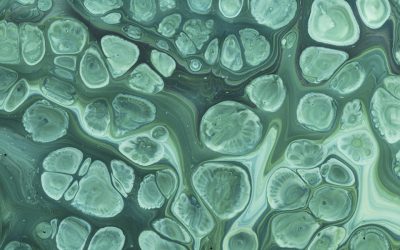In new work by Phillip Messersmith and his co-workers, working at Northwestern University and the University of Chicago, the properties of the mechanical holdfast of mussels, the byssus, are used as inspiration in the development of pH-repsonsive mechanical properties in hydrogels of catechol polymers with Fe3+.
Mussels use their strong, resilient byssus to tether to a surface in turbulent water. The byssus is formed at an acidic pH of 5.8, but then is exposed to more-alkaline seawater at a pH of 8.5, and, thought to be a consequence of co-ordination between its proteins and metal ions, possesses self-healing properties. 3,4-Dihydroxy-L-phenylalanine (DOPA) is a catechol-containing residue found in byssal proteins.
Prof. Messersmith and his team show that reactions between Fe3+ ions and PEG catechol polymers are strongly dependent on pH, with covalent catechol-catechol linkages dominating in acidic conditions and Fe3+-catechol co-ordination dominating in basic conditions; thus, that the viscoelasticity of these model hydrogels can be regulated by the environmental pH. They also show that the Fe3+-catechol co-ordination bonds dissipate energy in the hydrogel through rupture, but are re-formed on subsequent mechanical loading cycles in oscillatory rheometry experiments.
In unbuffered systems, covalent, elastic gels of the PEG-catechol polymer form rapidly in highly acidic conditions, in water, at an Fe3+:catechol ratio of 3:3. The influence of the Fe3+:catechol ratio is clear in that gels did not form at a ratio of 1:3. In buffered systems, the gels formed more slowly at acidic pH than at alkaline pH. Gels formed at an intermediate pH were rather more-viscous liquids with short relaxation times. There are also interesting properties of gels formed at a pH of 9.
















